
Safety Data Sheet Of SODIUM PERCHLORATE
Version:V2.0.0.1 Creation Date:2023/02/24 Revision Date:2023/02/24
*According to GHS (Ninth Revised Edition)
1 Identification
Product identifier
Product Name: SODIUM PERCHLORATE
CAS No.: 7601-89-0
EC No. : 231-511-9
Molecular Formula: NaClO4
Recommended use of the product and restrictions on use
Relevant identified uses: Please consult manufacturer.
Uses advised against: Please consult manufacturer.
Details of the supplier
Applicant Name: AP Chemical Ltd
Applicant Address: No.71-18,Anshan West Road,Hezhou City,Guangxi,China
Applicant Post Code: 542899
Applicant Telephone: +86-15711722168/+86-18277306663
Applicant E-mail: sales@ap-chems.com
Supplier Name: AP Chemical Ltd
Supplier Address: No.71-18,Anshan West Road,Hezhou City,Guangxi,China
Supplier Post Code: 542899
Supplier Telephone: +86-15711722168/+86-18277306663
Supplier E-mail: sales@ap-chems.com
Emergency phone number
Emergency phone number: +86-532-83889090
2 Hazard(s) identification
Hazard classification according to GHS
Oxidizing Solids: Category 1
Acute Toxicity – Oral: Category 4
GHS Label elements
Hazard pictograms
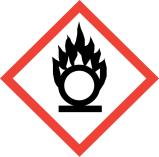
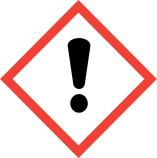
Signal word: Danger
Hazard statements
H271: May cause fire or explosion; strong oxidizer
H302: Harmful if swallowed
Precautionary statements
Prevention
P210: Keep away from heat, hot surfaces, sparks, open flames and other ignition sources. No smoking.
P220: Keep away from clothing and other combustible materials.
P264: Wash hands and other parts of the body (if related) thoroughly after handling.
P270: Do not eat, drink or smoke when using this product.
P280: Wear protective gloves/protective clothing/eye protection/face protection/hearing protection.
P283: Wear fire resistant or flame retardant clothing.
Response
P330: Rinse mouth.
P301+P317: IF SWALLOWED: Get medical help.
P306+P360: IF ON CLOTHING: Rinse immediately contaminated clothing and skin with plenty of water before removing clothes.
P370+P378: In case of fire: Use appropriate extinguishing media mentioned in Section 5 of the SDS to extinguish.
P371+P380+P375: In case of major fire and large quantities: Evacuate area. Fight fire remotely due to the risk of explosion.
Storage
P420: Store separately.
Disposal
P501: Dispose of contents/container in accordance with local/regional/national/ international regulations.
Hazard description
Physical and chemical hazards
Contact with combustible material easily cause fire.
Health hazards
Inhaled: Cough. Sore throat.
Ingestion: Accidental ingestion of the product may be harmful.
Skin Contact: Redness.
Eye: Redness. Pain.
Environmental hazards
Please refer to 12th chapter of SDS.
3 Composition/information on ingredients
Substance/mixture
Substance
| Component | CAS No. | EC No. | Concentration (wt, %) |
| Sodium perchlorate | 7601-89-0 | 231-511-9 | ≥ 99.3 |
4 First-aid measures
Description of first aid measures
General advice: Immediate medical attention is required. Show this safety data sheet (SDS) to the doctor in attendance.
Eye contact: First rinse with plenty of water for several minutes (remove contact lenses if easily possible), then take to a doctor.
Skin contact: Remove contaminated clothes. Rinse and then wash skin with water and soap.
Ingestion: Rinse mouth. Refer for medical attention.
Inhalation: Fresh air, rest. Refer for medical attention.
Protecting of first-aiders: Ensure that medical personnel are aware of the substance involved. Take precautions to protect themselves and prevent spread of contamination.
Most important symptoms/effects, acute and delayed
1 Substance accumulation, in the human body, may occur and may cause some concern following repeated or long-term occupational exposure.
Indication of any immediate medical attention and special treatment needed
1 Treat symptomatically.
2 Symptoms may be delayed.
5 Fire-fighting measures
Extinguishing media
Suitable extinguishing media: Water.
Unsuitable extinguishing media: Dry chemical, carbon dioxide or foam.
Specific hazards arising from the substance or mixture
1 Will not burn but increases intensity of fire.
2 Contact with combustibles such as wood, paper, oil or finely divided metal may produce spontaneous combustion or violent decomposition.
3 Has a fire-promoting effect due to release of oxygen.
4 The material may provide sufficient oxygen to make the fire fierce and self sustaining.
5 Smothering action may not be effective for established fire.
6 Development of hazardous combustion gases or vapor possible in the event of fire.
7 May expansion or decompose explosively when heated or involved in fire.
Special protective equipment and precautions for fire-fighters
1 As in any fire, wear self-contained breathing apparatus(MSHA/NIOSH approved or equivalent) and full protective gear.
2 Fight fire from a safe distance, with adequate cover.
3 Prevent fire extinguishing water from contaminating surface water or the ground water system.
6 Accidental release measures
Personal precautions, protective equipment and emergency procedures
1 Keep combustibles (wood, paper, oil, etc.) away from spilled material.
2 Ensure adequate ventilation. Remove all sources of ignition. Take precautionary measures against static discharges.
3 Evacuate personnel to safe areas. Keep people away from and upwind of spill/leak.
4 Use personal protective equipment,do not breathe dust/fume.
Environmental precautions
1 Prevent further leakage or spillage if safe to do so.
2 Discharge into the environment must be avoided.
Methods and materials for containment and cleaning up
1 Remove all sources of ignition. Use spark-proof tools and explosion-proof equipment.
2 Do not touch broken containers and spills before putting on appropriate protective clothing.
3 Use clean, non-sparking tools to collect absorbed material.
4 Pick up and arrange disposal without creating dust. Sweep up and shovel. Keep in suitable, closed containers for disposal.
5 It is recommended that emergency personnel wear dust masks and wear anti-static clothing.
6 Small spills: Collect spillage with a clean shovel and place in a clean, dry, loosely closed container to remove the container from the leak.
7 A large number of leaks: wetting with water and building a dike.
8 Prevent spills from entering water bodies, sewers, basements, or confined spaces.
9 Cut off the source of the leak as much as possible.
10 Keep leaks in a ventilated place.
11 Isolation of contaminated areas and restrictions on access.
12 It is recommended that emergency personnel wear dust masks.
13 Collect the spill with a clean shovel and place it in a clean, dry, loosely closed container and move the container away from the leak.
14 Adhered or collected material should be promptly disposed of, in accordance with appropriate laws and regulations.
Handling and storage
7 Precautions for safe handling
1 Handling is performed in a well ventilated place.
2 Wear suitable protective equipment.
3 Avoid contact with skin and eyes.
4 Keep away from heat/sparks/open flames/ hot surfaces.
Conditions for safe storage, including any incompatibilities
1 Keep containers tightly closed.
2 Keep containers in a dry, cool and well-ventilated place.
3 Keep away from heat/sparks/open flames/hot surfaces.
4 Store away from incompatible materials and foodstuff containers.
8 Exposure controls/personal protection
Control parameters
Occupational Exposure limit values: No relevant regulations
Biological limit values
Biological limit values: No relevant regulations
Monitoring methods
1 EN 14042 Workplace atmospheres. Guide for the application and use of procedures for the assessment of exposure to chemical and biological agents.
2 GBZ/T 300 series standard Determination of toxic substances in workplace air.
Engineering controls
1 Ensure adequate ventilation, especially in confined areas.
2 Ensure that eyewash stations and safety showers are close to the workstation location.
3 Set up emergency exit and necessary risk-elimination area.
4 Handle in accordance with good industrial hygiene and safety practice.
Personal protection equipment
General requirement

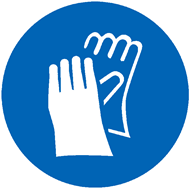
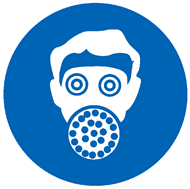
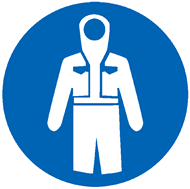
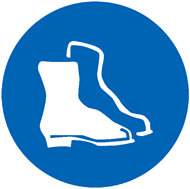
Eye protection: Must wear appropriate safety goggles.
Hand protection: Must wear appropriate chemical protective gloves.
Respiratory protection: Must wear appropriate personal respiratory protective equipment.
Skin and body protection: Must wear appropriate chemical protective clothing and chemical resistant shoes.
We are the chosen partners for fireworks&Civilian bomb industries worldwide, helping our customers design for efficiency, reuse resources, and revitalize natural systems.

Sign up to get regular product updates and promotion offer.
No.71-18 Anshan West Road Hezhou City Guangxi China
sales@ap-chems.com